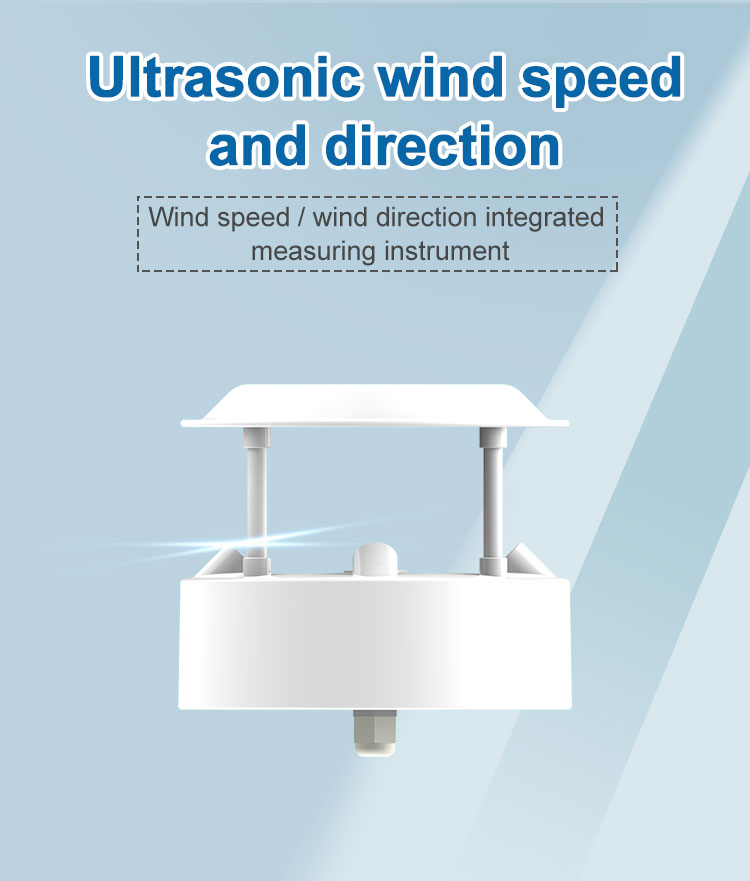What is an anemometer?
Before discussing the advantages of Ultrasonic wind speed sensors , let’s see what an anemometer is first. An anemometer is an instrument that measures air velocity. There are diverse types of it and among which that the wind cup anemometer is the most commonly used in meteorological stations. It is mainly composed of three parabolic cone empty cups fixed on the bracket at 120° each. The concave surface of the empty cup is all facing one direction. The whole sensing part is installed on a vertical rotating shaft.Under the effect of wind, the wind cup rotates around the shaft at a speed proportional to the wind speed.
The anemometer is mainly based on the meter adopting the calorimetric principle to measure the wind speed. The basic principle is to put a thin metal wire in the fluid and pass the current to heat the metal wire to make the temperature higher than the temperature of the fluid, so the metal The silk anemometer is called “hotline”. When the fluid flows through the metal wire in the vertical direction, it will take away a part of the heat of the metal wire, and the temperature of the metal wire will drop. According to the theory of forced convection heat exchange, it can be derived that there is a relationship between the heat Q lost by the heating wire and the velocity v of the fluid.
The wind speed sensor is an intelligent instrument with convenient use, good performance and high reliability. It can be widely used to measure wind speed in greenhouses, environmental protection, weather stations, and breeding places. There are many types of wind speed sensors, which can be divided into Pitot tube wind speed sensors, propeller wind speed sensors, Hall effect electromagnetic wind speed sensors, hot wire wind speed sensors, and ultrasonic wind speed sensors. Compared with the traditional wind speed meter, the ultrasonic wind speed sensor has the advantages of good measurement accuracy and multiple functions, and the structure of its probe is relatively simple. In many applications, it replaces the traditional wind speed and direction sensor. People will choose ultrasonic wind speed sensors in some field precision measurement tasks, such as urban environmental monitoring, wind power generation, weather monitoring, bridges and tunnels, marine ships, aviation airports, various fan manufacturing industries, and industries that require exhaust systems.

Advantages of anemometer:
1, Small size, small interference to the flow field;
2, Wide application range. It can be used not only for gas but also for liquid, and can be used in subsonic, transonic and supersonic flow of gas;
3, High measurement accuracy and good repeatability. The disadvantage of the hot wire anemometer is that the probe has a certain interference to the flow field, and the hot wire is easy to break.
4, In addition to measuring average speed, it can also measure pulsation and turbulence; in addition to measuring unidirectional motion, it can also measure velocity components in multiple directions at the same time.
The principle of Ultrasonic wind speed sensors :
The ultrasonic wind speed and direction sensor mainly uses the ultrasonic time difference method to realize the measurement of wind speed and wind direction. The propagation speed of sound in the air will be superimposed with the airflow speed in the wind direction. If the propagation direction of the ultrasonic wave is the same as the wind direction, its speed will increase; otherwise, its speed will slow down.
Therefore, under fixed detection conditions, the speed of ultrasonic propagation in the air can correspond to the wind speed function, and accurate wind speed and wind direction can be obtained by calculation.